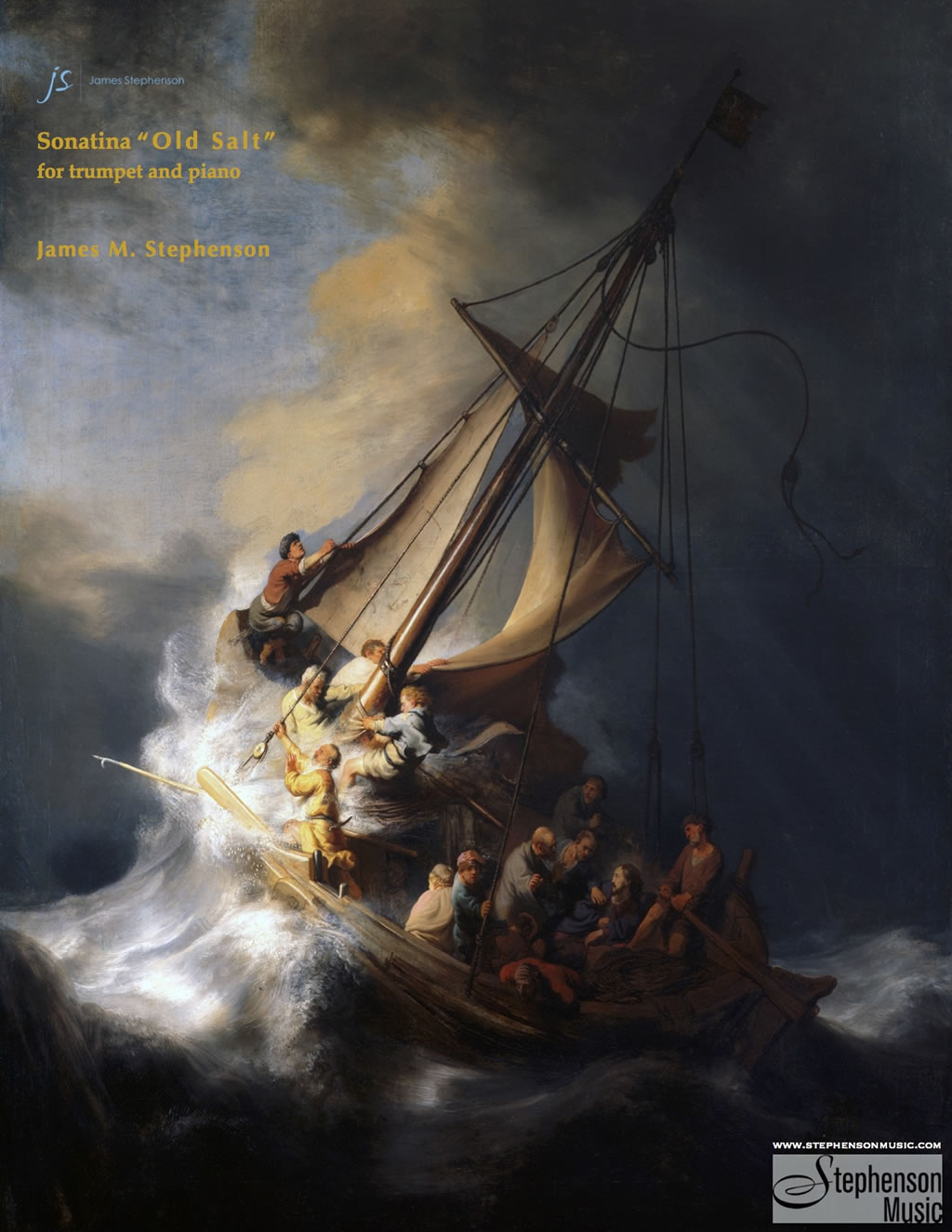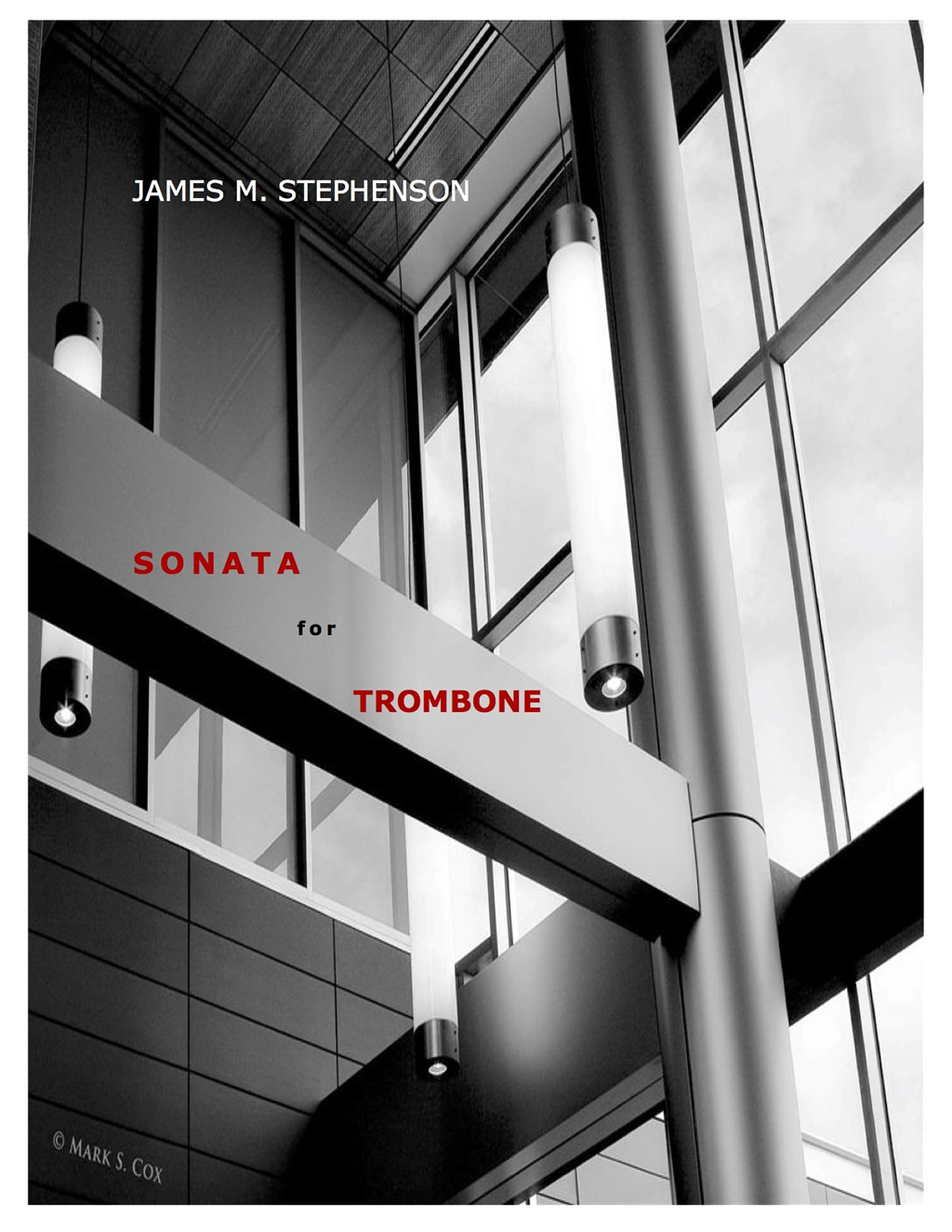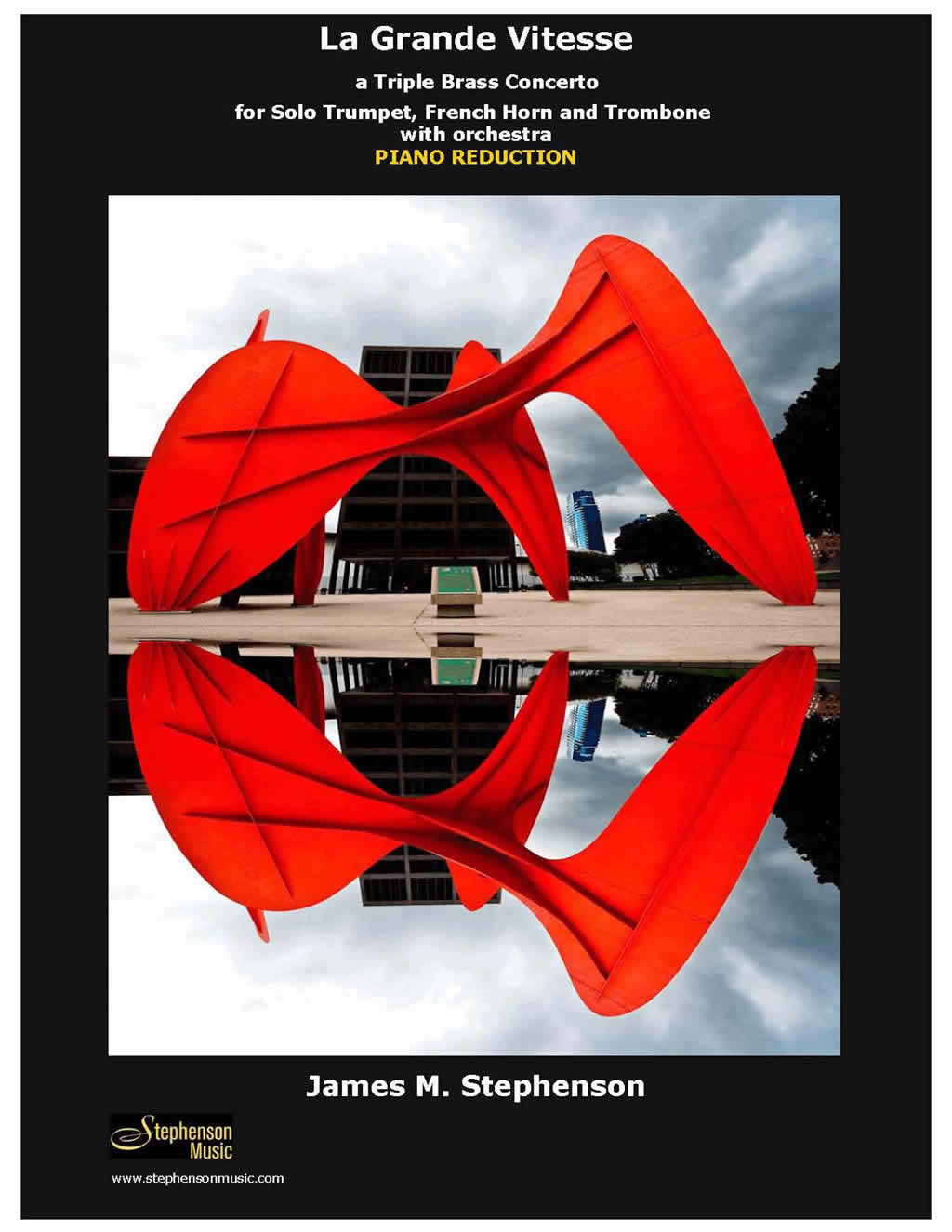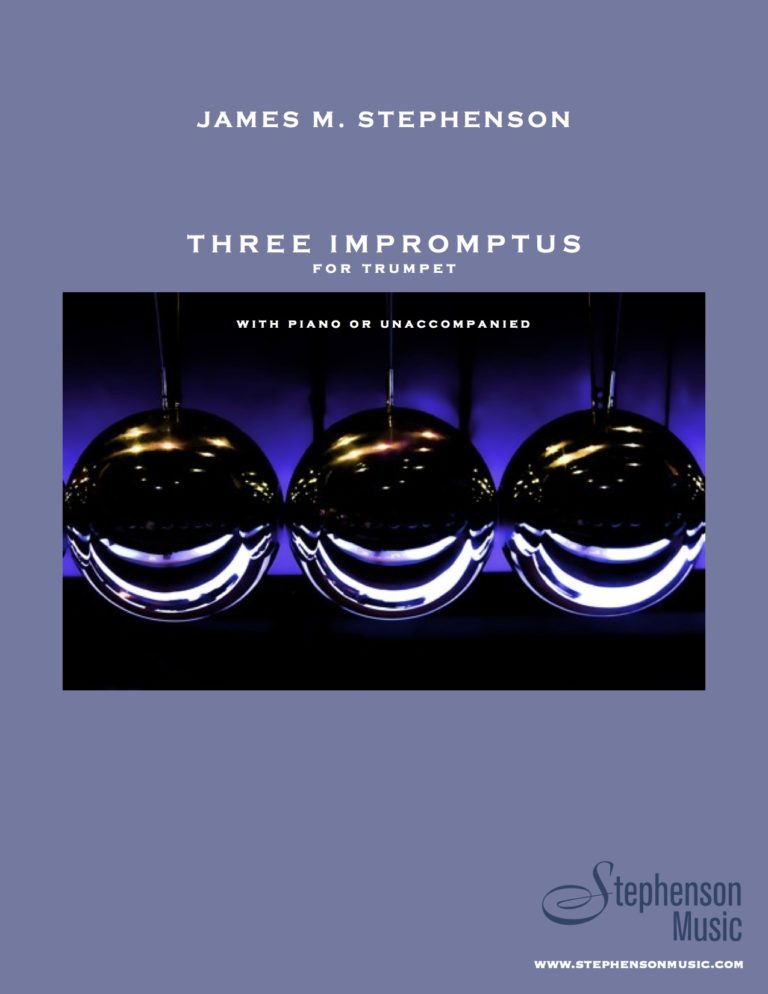Old Salt, Sonatina for trumpet and piano
$35.00
For trumpet and piano. View Score
1st mvmt – YOUTUBE
2nd mvmt – YOUTUBE
3rd mvmt – YOUTUBE
Nathan Little, trumpet; Dongni Xie, piano
Description
“Old Salt” – Sonatina for trumpet and piano (2014)
By James M. Stephenson
Commissioned by Laura Bruton for her son, Nathan Little, in memory of her father, Henry.
duration: 10′
Program Notes:
In the early summer of 2014, I was approached by Laura Bruton, principal violist of the Ft. Worth Symphony, with the idea of writing a work in memory of her father. Her father was a Navy veteran, and apparently, quite the character. Sadly, he had died from Alzheimer’s disease, but video proved that even as the disease progressed into late stages, he still never forgot “Anchors Aweigh”. To further enhance the personal quality of the project, the piece was to be written for Laura’s son, Nathan, who had become quite a high school standout on trumpet.
Almost all the works I compose have very personal relationships with those who have commissioned them. The difficulty is to create a work that has meaning to those directly involved with the collaboration, while maintaining a wide-arching flavor so that the work might live on. I think this can even enhance the meaning more, if a new work created in someone’s memory enters the repertoire, resulting in many performances.
With all of this in mind, I set the work into three movements.
The first movement explores the (assumed) frustration of Alzheimer’s.
I have never closely known anyone to be stricken with the disease, so my impressions are based purely on what I have heard. The music is not meant to make light of any of it, but does delve into some of the common characteristics: repetition, frustration, and intermittent glimpses of hope. The opening pattern – the basis for the entire movement – gets repeated many times, with some tense harmonies under-pining it, suggesting someone struggling to remember something important. There are some jazz harmonies thrown into the B section – as Henry was apparently a fan of jazz – but the music is still in an “angry” fashion, reminding us of the frustrating nature of the disease. Hidden into the chromatic “B” section is “Anchors Aweigh”, where the first accented note of each gesture spells out the main tune. The second movement is about remembrance. The main thematic material is again taken from “Anchors Aweigh”, now awash in lush jazz harmonies. The soloist plays echoes of the Naval Hymn “Eternal Father”. The third movement again deals with frustration – this time from family members as they come to grips with the passing with a loved one. However, frustration turns to joy, as the life of Henry begins to be celebrated. The entire movement is full of rhythmic and jazzy activity, and earlier themes, including “Anchors Aweigh”, return in a celebratory fashion.
The trumpet writing is challenging, but takes into account the exercises that might be common for a young trumpet player, such as scales, and other patterns that might work the fingers.
Jim Stephenson; December, 2014
Additional information
| Duration | |
|---|---|
| Featured Instrument | |
| Type of Purchase | |
| Type of Work |






